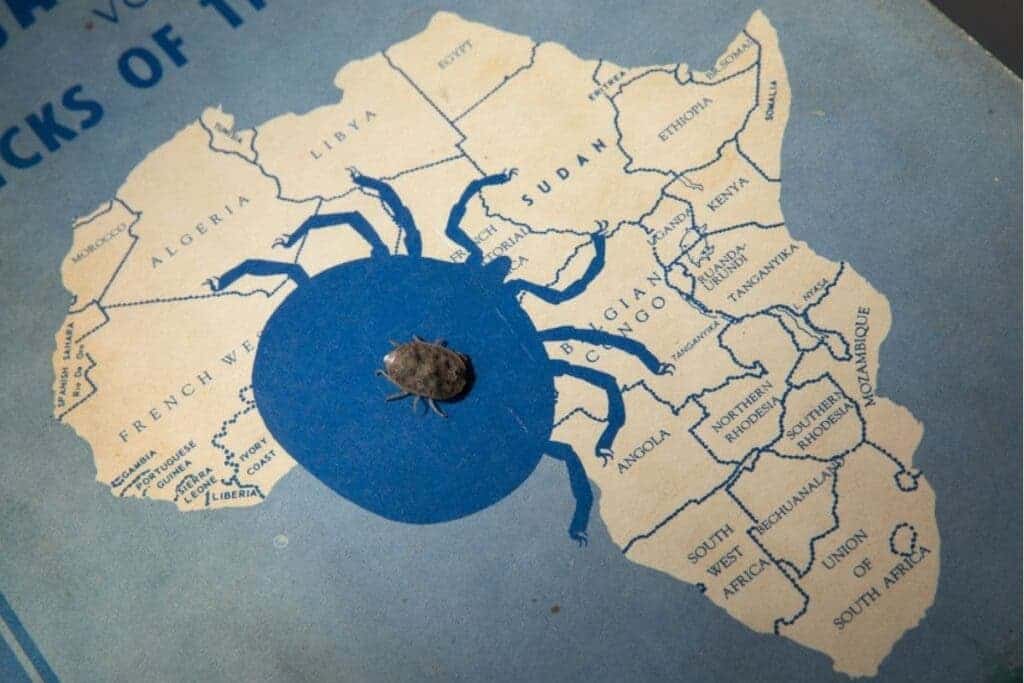
The toughest animals on Earth are often not what you expect. A prime example is the eight-legged tardigrades capable of surviving extreme heat, cold, and even the vacuum of space. But there’s another tough guy you should know about, especially since they often like to take on humans. Meet the East African tick, a blood-sucking arachnid that can go without food for at least 8 years, and with a lifespan of over 27 years. What’s more, females have been able to lay eggs even 4 years after the last male in their group had died.
The remarkable longevity and resilience of the East African (Argas brumpti) tick were just recently revealed by a rare study almost 60 years in the making, which could be a separate story in itself, illustrating the virtues of patience in science.
It all started in 1976, when Julian Shepherd, an associate professor of biological sciences at Binghamton University in New York, was given six adult females, four adult males, and three nymphs of A. brumpti collected from caves near Nairobi, Kenya. He decided to monitor them in his lab in a habitat with stable conditions, where they were fed periodically on mice, rabbits, or drawn rat blood.
For years, the captive ticks enjoyed their regular feast until one day Shepard simply stopped giving them blood when his lab ran out of rabbits and mice to feed on. Little did the biologist realize at the time that, even starving, his original group of ticks would survive until the next century.
East African ticks have soft and leathery skins, unlike the hard shell sported by the common types of ticks that you’ll find in the parks and countryside. And unlike your run-of-the-mill tick, Argas brumpti is not reported to carry any diseases, although its bites can cause substantial, painful lesions with aftereffects sometimes persisting for many months and even years, something that Shepard knows from first-hand experience.
In their natural habitat, the ticks reside in shallow caves, rocky areas, or dust-bath areas used by their favorite prey, such as small to large mammals and lizards, notably in the dust around termite mounds that large mammals rub against. This perennially dry environment with few opportunities to encounter hosts may explain A. brumpti‘s extreme longevity, even within a taxon renowned for sustained survival even without food or water.
“I am always enthralled by the adaptations of organisms to their environment—in this case, a dry environment with virtually no access to water for long periods of time and a lifestyle that must wait for very long intervals of no food between encounters with host animals,” Shepherd said in a statement.
Adaptations to its environment may explain another incredible feat. Four years after the last original tick died, the females continue to live for another four years. These hungry females were eventually fed, and much to Shepherd’s surprise, at least one of the females laid a batch of eggs. This second generation of offspring is still alive and apparently healthy to this day, being 26 years old and counting. The oldest tick from the original batch died after 27 years, during which they were deprived of food for eight years.
One explanation is that the female ticks are capable of parthenogenesis, also known as “virgin births” because embryos can grow and develop without fertilization by sperm. But Shepherd thinks this is extremely unlikely. Instead, the females are probably capable of long-term sperm storage until they have ample food, at which point the sperm moves up the reproductive tract and fertilizes eggs.
In any case, both this longevity and long-term storage are records for any species of tick — and these insights could prove useful beyond the remarkable nature of conducting a 60-year experiment. That’s something for other researchers to learn though, as the ticks have been shipped to South Africa for further study, while Shepherd is now moving onto new research on moths and the physiology of their sperm.
“Research on how organisms master such challenges can inform understanding of how other organisms, including us, might manage similar challenges,” Shepherd said.
The findings appeared in the Journal of Medical Entomology.


